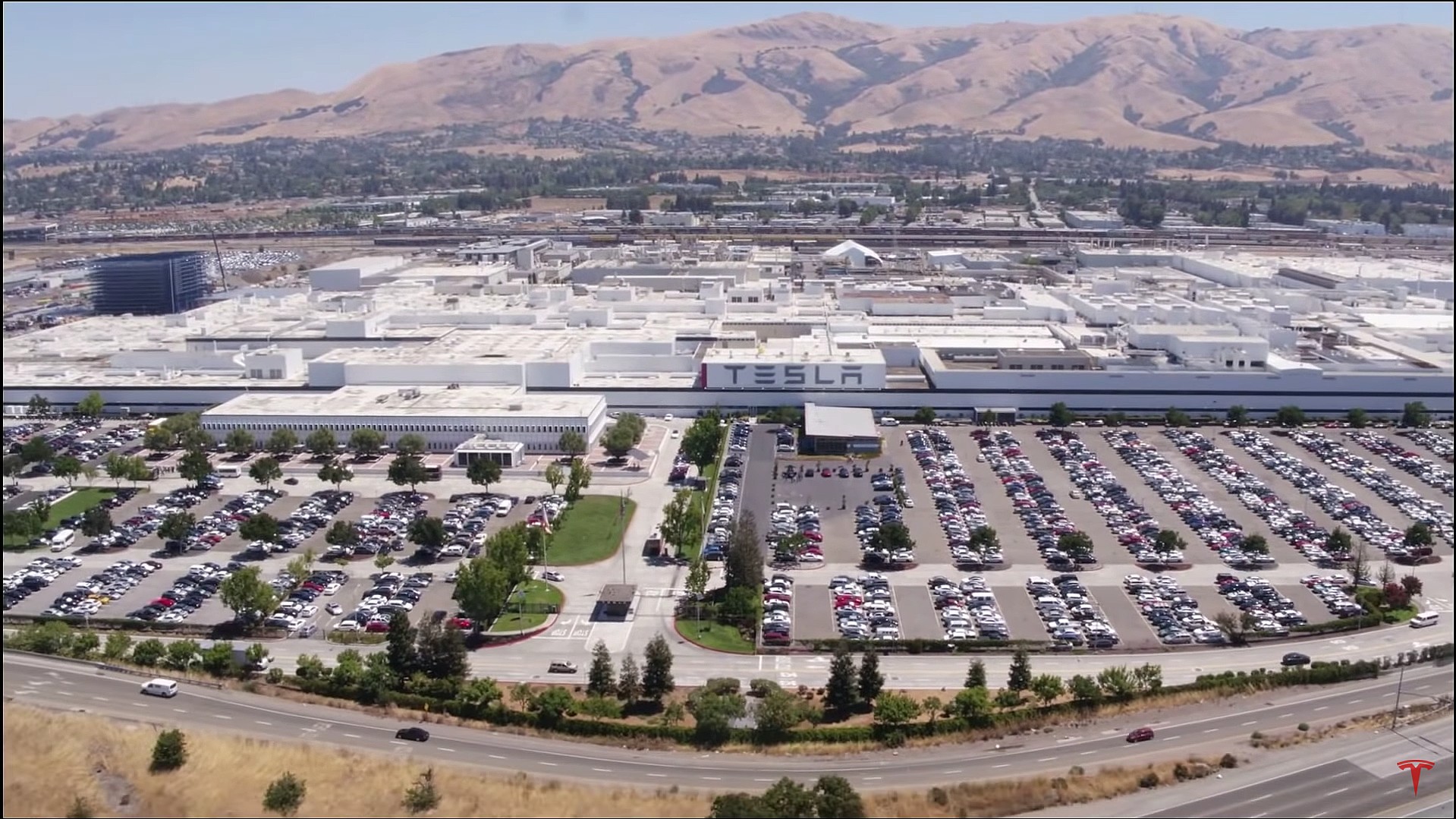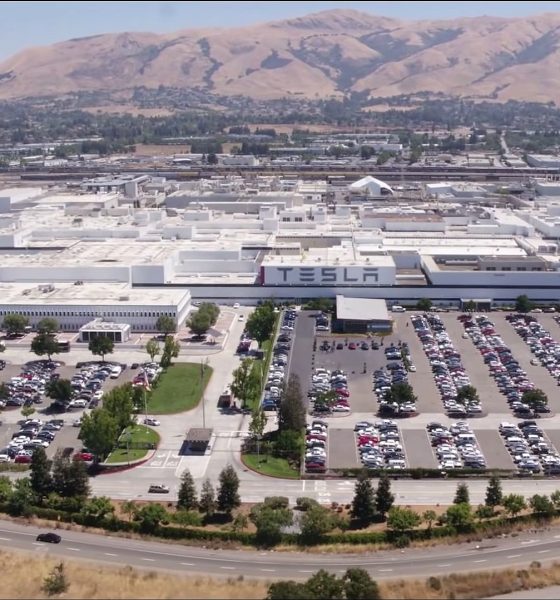

News
Tesla Fremont factory reopening defended by county officials: ‘TSLA has not been given an exception’
Tesla’s situation at the Fremont facility has been clarified by Alameda County health officials, who published their response to questions they have received from the media. The updated information from the county was posted in a press release that was published on Wednesday night.
Tensions between Tesla and Alameda County came to a head recently after the company was set to reopen at with “limited operations” last Friday under conditions that were mandated by California Governor Gavin Newsom. However, Alameda County health officials prohibited Tesla from reopening its Fremont plant on May 8.
Under the leadership of CEO Elon Musk, Tesla reopened the Fremont factory on Sunday, May 10, against the wishes of county health officials. Media members asked several questions about why Tesla had not been penalized for not listening to instructions. This was explored in one of the inquiries asked by members of the media.
On Monday, Elon Musk tweeted that “Tesla is restarting production today against Alameda County rules. I will be on the line with everyone else. If anyone is arrested, I ask that it only be me.” Given that the CEO acknowledges that production has restarted against the county health order’s guidelines, why does your statement indicate that there may be a “possible reopening next week”?
Alameda County officials responded to this inquiry by clarifying that Tesla is operating above basic minimum operations due to the nature of the auto industry, which requires a lead-up period before production facilities could return to normal operations.
“We have met with Tesla representatives and have confirmed that Tesla is not engaged in full operations, contrary to media reports. Tesla has confirmed that its operations require a substantial lead time to become fully operational, and their current operations are only slightly above Minimum Business Operations. The City of Fremont Police Department – which had done multiple site-visits at the plant over multiple years, and which has knowledge of what Tesla’s normal operations look like – will conduct a site visit today to confirm Tesla’s claims.
“Given the unique nature and scale of automobile manufacturing and the safety measures agreed to by Tesla, we concluded that ramp up activity with a minimal increase in minimum basic operations can occur safely.”
Earlier reports indicated that Tesla’s employee parking lots in Fremont might have been just as occupied on Sunday and Monday as it was for a typical work shift. However, Alameda County officials clarified that the facility was only operating under conditions that were slightly above minimum basic operations. This action is due to “substantial lead time to become fully operational,” the county explained.
Another question suggested that Tesla received special treatment from Alameda County. CEO Elon Musk stated earlier this week that the facility was reopened despite the county’s stance. No disciplinary action was taken by the County, and journalists wanted to know why. This was addressed in an inquiry from a member of the media.
“Given that Tesla has been given an exception, what does that do to the moral authority of the County when other businesses try to open before they’re allowed? I think the question of equal enforcement of the law is an important public policy issue.”
Alameda County officials clarified that Tesla had not received any sort of preferential treatment and that Tesla’s safety plan was clear enough to indicate that it was safe to begin production as early as next week.
“Tesla has not been given an exception. The role of the Public Health Department is to protect our residents and the individuals who come to work in Alameda County. We do that by reviewing safety plans and working with local law enforcement, who hold the authority to enforce the Health Officer Orders. We hope and expect that other businesses see the value of continuing to abide by the Health Officer Order, as it applies to them, in order to protect their workforce, our most vulnerable residents, and our health care systems in general. Because of the hard sacrifices of our local businesses, we anticipate another phase of reopening as early as next week.”
The full Press Release from Alameda County could be accessed in full below.
press-release-2020.05.13 by Simon Alvarez on Scribd

Elon Musk
Elon Musk and Tesla AI Director share insights after empty driver seat Robotaxi rides
The executives’ unoccupied tests hint at the rapid progress of Tesla’s unsupervised Robotaxi efforts.

Tesla CEO Elon Musk and AI Director Ashok Elluswamy celebrated Christmas Eve by sharing personal experiences with Robotaxi vehicles that had no safety monitor or occupant in the driver’s seat. Musk described the system’s “perfect driving” around Austin, while Elluswamy posted video from the back seat, calling it “an amazing experience.”
The executives’ unoccupied tests hint at the rapid progress of Tesla’s unsupervised Robotaxi efforts.
Elon and Ashok’s firsthand Robotaxi insights
Prior to Musk and the Tesla AI Director’s posts, sightings of unmanned Teslas navigating public roads were widely shared on social media. One such vehicle was spotted in Austin, Texas, which Elon Musk acknowleged by stating that “Testing is underway with no occupants in the car.”
Based on his Christmas Eve post, Musk seemed to have tested an unmanned Tesla himself. “A Tesla with no safety monitor in the car and me sitting in the passenger seat took me all around Austin on Sunday with perfect driving,” Musk wrote in his post.
Elluswamy responded with a 2-minute video showing himself in the rear of an unmanned Tesla. The video featured the vehicle’s empty front seats, as well as its smooth handling through real-world traffic. He captioned his video with the words, “It’s an amazing experience!”
Towards Unsupervised operations
During an xAI Hackathon earlier this month, Elon Musk mentioned that Tesla owed be removing Safety Monitors from its Robotaxis in Austin in just three weeks. “Unsupervised is pretty much solved at this point. So there will be Tesla Robotaxis operating in Austin with no one in them. Not even anyone in the passenger seat in about three weeks,” he said. Musk echoed similar estimates at the 2025 Annual Shareholder Meeting and the Q3 2025 earnings call.
Considering the insights that were posted Musk and Elluswamy, it does appear that Tesla is working hard towards operating its Robotaxis with no safety monitors. This is quite impressive considering that the service was launched just earlier this year.
Elon Musk
Starlink passes 9 million active customers just weeks after hitting 8 million
The milestone highlights the accelerating growth of Starlink, which has now been adding over 20,000 new users per day.

SpaceX’s Starlink satellite internet service has continued its rapid global expansion, surpassing 9 million active customers just weeks after crossing the 8 million mark.
The milestone highlights the accelerating growth of Starlink, which has now been adding over 20,000 new users per day.
9 million customers
In a post on X, SpaceX stated that Starlink now serves over 9 million active users across 155 countries, territories, and markets. The company reached 8 million customers in early November, meaning it added roughly 1 million subscribers in under seven weeks, or about 21,275 new users on average per day.
“Starlink is connecting more than 9M active customers with high-speed internet across 155 countries, territories, and many other markets,” Starlink wrote in a post on its official X account. SpaceX President Gwynne Shotwell also celebrated the milestone on X. “A huge thank you to all of our customers and congrats to the Starlink team for such an incredible product,” she wrote.
That growth rate reflects both rising demand for broadband in underserved regions and Starlink’s expanding satellite constellation, which now includes more than 9,000 low-Earth-orbit satellites designed to deliver high-speed, low-latency internet worldwide.
Starlink’s momentum
Starlink’s momentum has been building up. SpaceX reported 4.6 million Starlink customers in December 2024, followed by 7 million by August 2025, and 8 million customers in November. Independent data also suggests Starlink usage is rising sharply, with Cloudflare reporting that global web traffic from Starlink users more than doubled in 2025, as noted in an Insider report.
Starlink’s momentum is increasingly tied to SpaceX’s broader financial outlook. Elon Musk has said the satellite network is “by far” the company’s largest revenue driver, and reports suggest SpaceX may be positioning itself for an initial public offering as soon as next year, with valuations estimated as high as $1.5 trillion. Musk has also suggested in the past that Starlink could have its own IPO in the future.
News
NVIDIA Director of Robotics: Tesla FSD v14 is the first AI to pass the “Physical Turing Test”
After testing FSD v14, Fan stated that his experience with FSD felt magical at first, but it soon started to feel like a routine.

NVIDIA Director of Robotics Jim Fan has praised Tesla’s Full Self-Driving (Supervised) v14 as the first AI to pass what he described as a “Physical Turing Test.”
After testing FSD v14, Fan stated that his experience with FSD felt magical at first, but it soon started to feel like a routine. And just like smartphones today, removing it now would “actively hurt.”
Jim Fan’s hands-on FSD v14 impressions
Fan, a leading researcher in embodied AI who is currently solving Physical AI at NVIDIA and spearheading the company’s Project GR00T initiative, noted that he actually was late to the Tesla game. He was, however, one of the first to try out FSD v14.
“I was very late to own a Tesla but among the earliest to try out FSD v14. It’s perhaps the first time I experience an AI that passes the Physical Turing Test: after a long day at work, you press a button, lay back, and couldn’t tell if a neural net or a human drove you home,” Fan wrote in a post on X.
Fan added: “Despite knowing exactly how robot learning works, I still find it magical watching the steering wheel turn by itself. First it feels surreal, next it becomes routine. Then, like the smartphone, taking it away actively hurts. This is how humanity gets rewired and glued to god-like technologies.”
The Physical Turing Test
The original Turing Test was conceived by Alan Turing in 1950, and it was aimed at determining if a machine could exhibit behavior that is equivalent to or indistinguishable from a human. By focusing on text-based conversations, the original Turing Test set a high bar for natural language processing and machine learning.
This test has been passed by today’s large language models. However, the capability to converse in a humanlike manner is a completely different challenge from performing real-world problem-solving or physical interactions. Thus, Fan introduced the Physical Turing Test, which challenges AI systems to demonstrate intelligence through physical actions.
Based on Fan’s comments, Tesla has demonstrated these intelligent physical actions with FSD v14. Elon Musk agreed with the NVIDIA executive, stating in a post on X that with FSD v14, “you can sense the sentience maturing.” Musk also praised Tesla AI, calling it the best “real-world AI” today.








